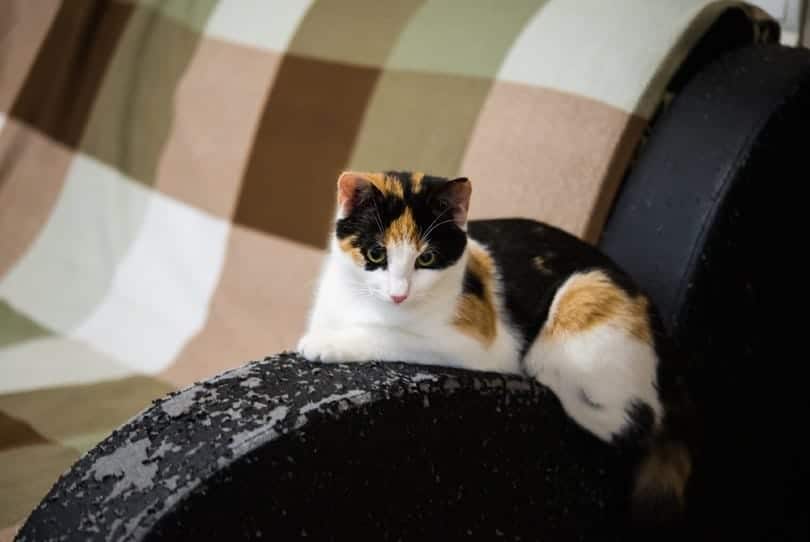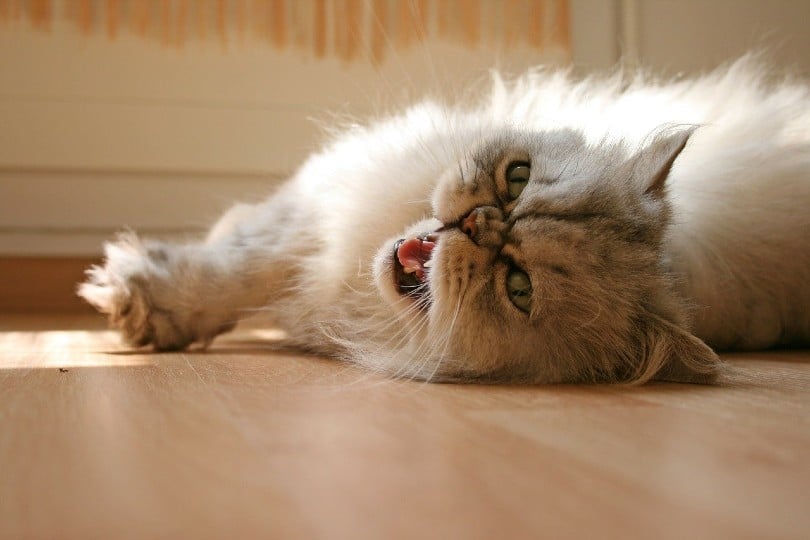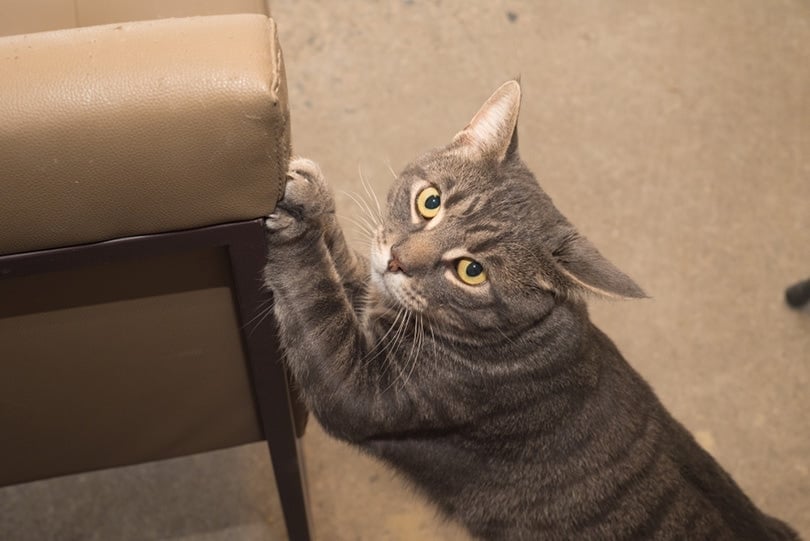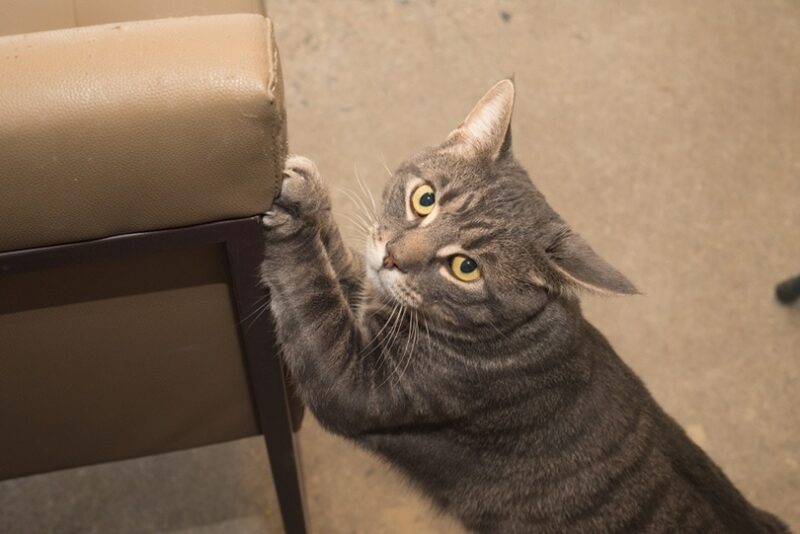Sometimes, cats display behaviors that we owners are not fond of. For example, we have all heard horror stories about cats ruining a couch or shredding up a new lounge chair. So, do all cats scratch furniture?
The truth is that while not all cats scratch furniture, many do, and for a variety of reasons. Scratching is a natural act for cats, so it should not be discouraged when the scratching happens on suitable items. However, scratching furniture is not acceptable. Let’s take a look at why your cat might be scratching your furniture and what you can do about it.
Why Your Cat Might Be Scratching Your Furniture
There are quite a few reasons that your kitty cat might be scratching at your furniture. The first thing to understand is that cats need to scratch — it’s in their nature. Even cats that have been declawed (a practice that we do not recommend) can be caught scratching at things. Here are the most common reasons that your cat might use your furniture as a scratching post.

1. Exercise
Scratching provides cats with much-needed exercise for happiness and health. Their leg muscles, forelimbs, and spine get a little workout whenever a feline scratches. Some cats use their weight as resistance as they scratch, which engages almost all the muscles in the body. Scratching indoors is typically done more often by cats that do not go outside for exercise.
2. Claw Maintenance
Scratching helps cats maintain healthy claws as time goes on. When scratching takes place, the outer husks of the claws become loose and fall off, making way for new claw growth to happen. Regular scratching can reduce the need for clipping a cat’s claws, which is never a fun experience for a cat or their owner.
Keeping your cat's paws healthy starts with keeping their nails trimmed. A great set of clippers like the Hepper Cat Nail Clipper Set can help you safely and easily do this at home. This set includes two sizes of clippers with stainless steel blades, built-in safety guards, and comfortable handles, along with a nail file and a storage pouch. Get ready for easy nail trimming! At Catster, we’ve admired Hepper for many years and decided to take a controlling ownership interest so that we could benefit from the outstanding designs of this cool cat company!
3. Boredom
Being bored is another reason that a cat might decide to scratch on the furniture. If they don’t have anything better to do, they will turn scratching into an all-day activity, which can cause damage to furniture and other belongings in the house. Cats with access to plenty of toys and interaction with family members are less likely to scratch out of boredom.

4. Attention
Attention-seeking cats might decide to scratch furniture even if the attention that they get from doing so is negative. Some cats like attention all the time and are always trying to find ways to get it. However, most cats will only scratch for attention when they are being ignored by their companions or are left to fend for themselves all day, every day.
5. Gameplay
Sometimes cats get carried away when they are feeling rambunctious and playful, in which case, they might run up and scratch your furniture between pounces on a toy or a cat companion. Scratching as part of gameplay is not something that most owners have to worry about often. The behavior usually happens in spurts throughout a given period.
How to Stop Your Cat from Scratching Your Furniture
Fortunately, you don’t have to put up with your cat scratching and ruining your furniture. It may just take a bit of discipline when you witness the behavior to stop the scratching. However, you may need to do more than just correct the behavior with words and actions. Here are other options to consider.
1. Provide Scratching Alternatives
If your cat doesn’t have anything to scratch, it can be tough to keep them from doing it on your furniture. By making a scratching post and/or pad available in the house, there will be less of a need for your kitty to scratch on furniture. You can save money and make a DIY cardboard cat scratcher that holds up just as well as store-bought ones.
2. Utilize a Deterrent Spray
An easy way to stop your cat from scratching your furniture is to mist the furniture with a cat deterrent spray, like the one Nature’s Miracle offers. These sprays are designed with all-natural ingredients that your cat won’t think smell good but that won’t offend the human nose. Nobody will know that your furniture has been sprayed but your cat, and they will want to steer clear.
3. Invest in New Toys
If you think that your kitty might be scratching your furniture out of boredom, investing in a few new toys might be all that it takes to fix the problem. Keep the new toys near the pieces of furniture that your pet likes to scratch on the most, to draw their attention away. Toys that make noise and can move or interact with your feline should keep them entertained.
Playing is an important part of keeping your cat mentally and physically engaged, and a great toy will make it much easier. We like Hepper's Catnip Stick Toys because they're sturdy enough to handle intense play and completely filled with organic catnip. You'll love the fun range of pastel colors and your cat will enjoy the prey-like shape!
- No Filler - Like all the best cat toys our is stuffed with 100% organic catnip. Cheap cat toys with...
- Flexible Play - Simple plush shape is great for biting, scratching and pawing. It can start life as...
- Durably Designed - Our cat safe toys are hand-stitched with a double-lined exterior construction for...
At Catster, we’ve admired Hepper for many years and decided to take a controlling ownership interest so that we could benefit from the outstanding designs of this cool cat company!
4. Commit to Daily Quality Time Together
Another effective way to keep your cat from scratching your furniture is to commit to spending quality time with them each day. Whether it’s first thing in the morning, during your lunch break, or right before bed, take the time to talk to, cuddle, and play with your cat. The extra attention might be just what they need to stop ruining your furniture.
Final Comments
Nobody likes their furniture being scratched on by a cat. Unfortunately, it’s a behavior that many cats display at one time or another, if not on a regular basis. Understanding the reason for the scratching is the first step to figuring out how to curb the behavior. Hopefully, the insight and advice offered here will help you get to the bottom of your furniture-scratching problem once and for all.
Featured Image Credit: Melissa Sue, Shutterstock















